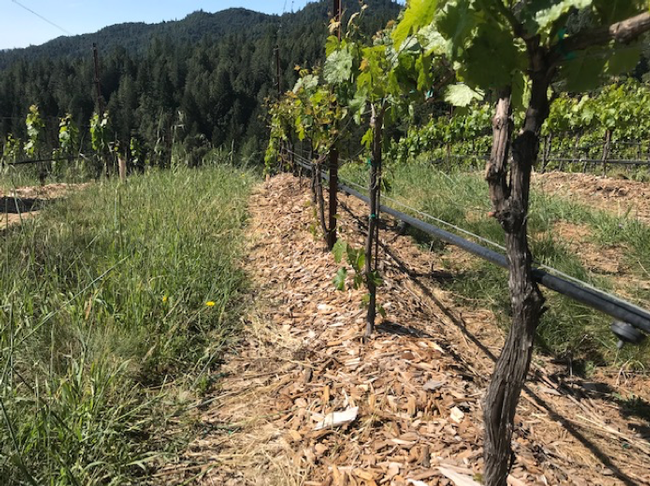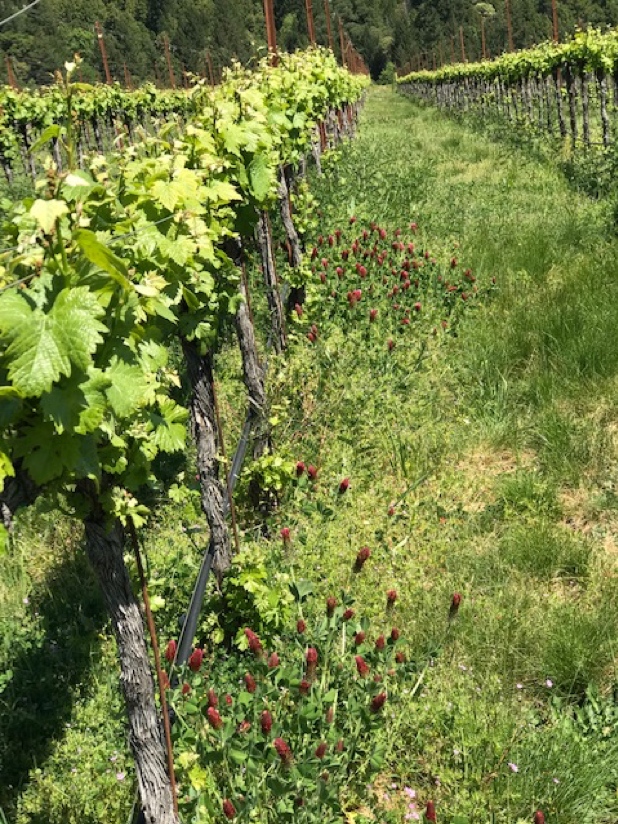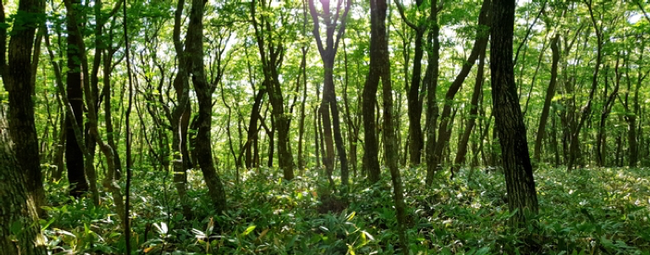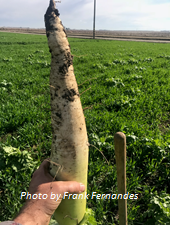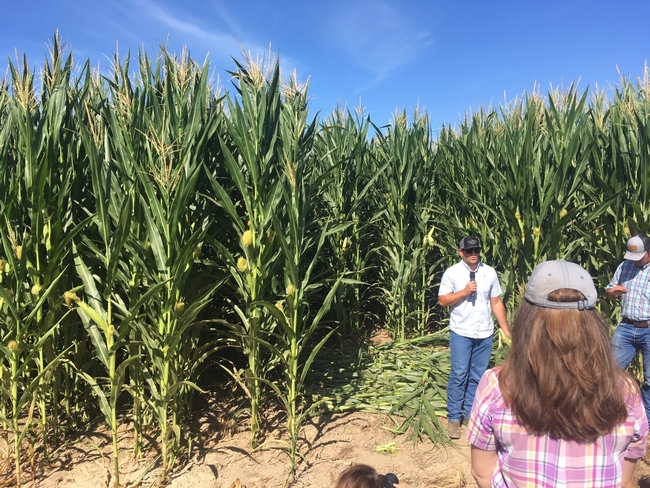- Author: Britta Leigh Baskerville
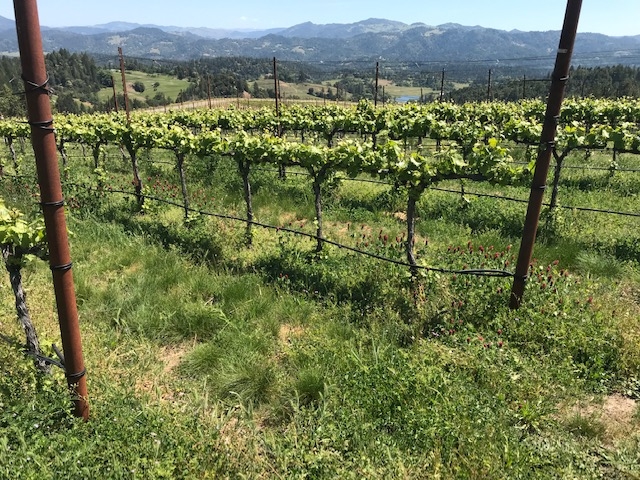
Located in Laytonville, CA, 150 miles North of San Francisco and 12 miles from the Pacific Ocean, sits Alder Springs Vineyard. This remarkable piece of land is home to approximately 140 acres of wine grape vines ranging in cultivars and management practices. To a UC Climate-Smart Ag Specialist, speaking to owner/manager Stuart Bewley and visiting this land is always an informative and inspirational experience. In my work with the CDFA Healthy Soils Program, and later with the North Coast Soil Health Hub, I've had a chance to meet with Stuart on several occasions, and recently got to sit down and record a few of his thoughts on the matter of ecological land stewardship.
A scientist at heart, Stuart took viticulture courses at UC Davis and traveled the world, meeting with other vineyard managers, industry contacts, consultants and experts, to better understand how to produce quality grapes.
“We're in the vineyard business, and in order to attract and keep clients, we have to make great wine. Most of our clients are relatively small, so they have a competitive disadvantage… a smaller company lacks the competitiveness of an army of salespeople being able to twist the arms of distributors, they have to compete on quality. And that quality has to be superior. The wines have to just be extraordinary. And in order for those wines to be extraordinary, their grapes have to be extraordinary. And I believe, in order to keep my clients competitive, I have to grow extraordinary grapes.”-SB
Because of this, Stuart is constantly experimenting with management strategies, tailoring each varietal to their unique management needs. But beyond business, he has a strong pull to make his production more ecologically sustainable for a number of reasons. Increasing Carbon in his soils and reducing herbicide use were the reasons I first received a phone call from Stuart, just a few weeks after joining the UCCE office in Ukiah.
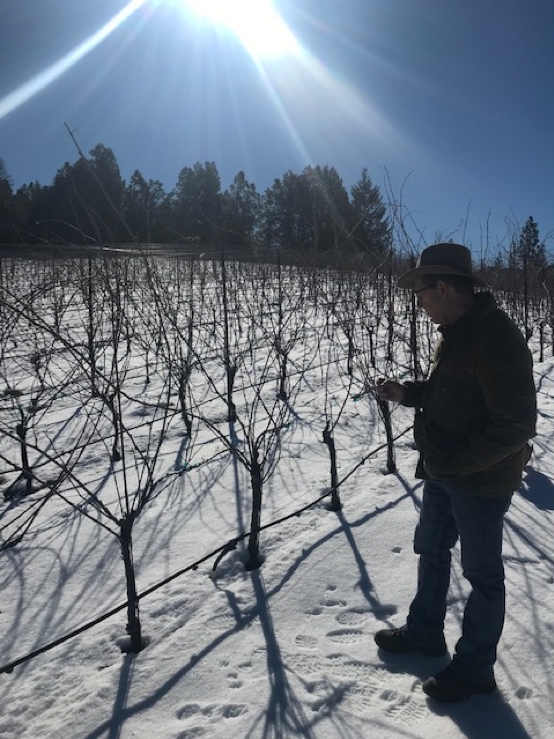
This was early February 2019, and Stuart was interested in applying for a Healthy Soils Program award. His project idea was to apply heavy bands of compost and mulch under his vines to suppress weeds while reducing Nitrogen lockup and erosion, inoculating the soil with microorganisms, and increasing soil Carbon.
“With more and more evidence that Round-Up is carcinogenic, our winery clients are starting to demand we use another method of weed control under-vine. Not wanting to continue to put ourselves, our labor, our customers, or our ecosystems in harm's way, we feel that it is time to change our methods. The only other method used by most Organic or Biodynamic growers is tilling. This method releases carbon into the atmosphere and reduces the organic matter in the soil. We are on hillsides with year-round class 1 streams near our vineyards. (These streams are spawning grounds for Steel Head, King Salmon, and Coho Salmon.) We need a method of under-vine weed control that protects the soil from erosion. Through a small experiment on another parcel, we were able to determine that a one-time application of a 3" mulch layer is enough to suppress weeds and reduce soil erosion for up to 3 years. A thick band of compost under the mulch was shown to add enough available Nitrogen to maintain vine vigor. Together they proved to be an effective practice for suppressing weeds with the added benefit of soil protection from erosion and ultraviolet light. We would also like to measure the effects of these practices on the structure and quality of soil organic matter, the reduction of GHG emissions, and the capacity of soil Carbon sequestration.” -Excerpt from the Alder Springs HSP application (unsubmitted)
Unfortunately, due to the strict implementation requirements of the HSP Incentives Program, we weren't able to submit an application for the last HSP round in March of 2019. Based on their calculations and guidelines of their scientific committee, HSP requires farmers implementing compost and mulch as their project to apply both once a year for three years, instead of the desired one-time application. This requirement was beyond the realms of possibility, because the cost of the project skyrocketed well beyond the max award amount of $75k when tripled, even at the smaller scale of approx. 30 acres. We considered a HSP Demonstration Project, which allows for experimental trials at different application rates, but with the lack of time and resources, the scope of the project unfortunately became bigger than we could chew. Sadly, we had to pull out of the application process at the last moment, with the hopes that we could fine tune a project by the next round in early 2020. The silver lining to this is, upon deciding to go through with the project without CDFA funding, Stuart discovered a large challenge that would have made it nearly impossible to pull off, even with a one-time application of mulch:
“I got too ambitious last time. I should have been simpler and just done a compost application grant. You know what's interesting is I ended up doing a certain amount of this on my own, and I've learned a few things: Putting the mulch on, even though I still like the idea of the program, the amount of time and expense of doing that is astronomical, on any kind of a volume basis. Just because there's so much material you're putting out. Even though the woodchips don't break down very quickly, and they last quite a few years, there's a lot of woodchips out there and the only equipment we can get out there is relatively small equipment. And the number of loads was just massive, and the amount of time it took was incredible. I calculated 1 full time guy, I couldn't even do it in a year if he worked 50 hours a week. I was going, ‘wow I can't put that kind of commitment into this.'”- SB
Pulling off the grandiose scope of work commitment with these grant agreements is one potential pitfall, I've discovered from working on these grants this year. Several of the HSP award winners I've worked with are operating with a sort of shell-shock as they are starting their projects and fully realizing what they signed up for. Scope of work revisions are possible, but with the winter season approaching and the year 1 deadline looming, getting out there sooner rather than later is key. This is advice I will be preaching in the following rounds: go for what you realistically want to do on your land with just a few months' notice. It's better if you consider this opportunity as spending your own time and money instead of getting piles of free money from the government. A small project may be funded more readily than an ambitious project that will need to be revised when it's understood you can't actually pull it off.
As for Stuart, he's got another project in mind for this next round of funding: undervine cover crops. He's already started experimenting on a small scale on another parcel.
“I apply compost and then I put down clover seed and just sort of rake it in. Then it pops out and it only grows about 4-5in tall, which is no problem. And then I bought a Fischer Twister, which is an Italian machine that mows under the vine. I had done about 3-4 acres and it worked fantastically. It eliminates tilling, it eliminates herbicide, it uses compost, and it also sequesters Carbon through the growing plant material, and it totally prevents and eliminates erosion, and it also builds bacteria and fungi (particularly fungi for vineyards) in the soil. Any volunteer weeds that grow taller than clover get mowed out.” -SB
He admitted this experiment does work better on older vines, with no noticeable reduction to vine vigor and without a need to increase irrigation. In contrast, younger vines still require twice as much watering as their roots compete for available soil moisture. But the benefit of reducing erosion on the hillsides makes it a valuable management practice regardless.
“Where I've got grass or cover crop only in the [tractor rows], after 20 years it's higher than the [vine]row itself. The [vine]row is sinking. That's probably the result of erosion or it's just naturally losing Carbon and we're not reapplying Carbon. Whereas on mowing, I probably have to mow 4-5 times a season. So not only do I have plants that are growing and have root mass, but I'm also adding all their cuttings to the same area 5x a year. Over 20 years the tractor rows are building up and the vine rows are sinking. So now the vine rows are becoming a stream bed, and we're seeing even more erosion.” -SB
Stuart intends on applying for the next round of HSP Incentives Program awards for his undervine cover crop experiment, but he's also got something else on his mind that hasn't made it onto the HSP list of eligible management practices: biochar.
“We have massive numbers of acres of forest that are tremendously over-populated with underbrush. So my forest, and everyone else's forests, are tinderboxes waiting to explode on an October afternoon with low humidity and high winds. So instead of sequestering Carbon, we're releasing it into the air in massive forest fires. If you were to take a substantial percent of that Carbon, and chip them up and turn them into biochar, not only would you be able to prevent forest fires, you would be able to sequester it in agricultural soils for a thousand years. Biochar changes the whole structure of the soil. It absorbs a tremendous amount of moisture, and a small piece of biochar can be the home for millions of bacteria and fungi. Because they absorb and hold so much moisture, you can create an environment where soil biology functions properly, and it sequesters moisture for the plants that are growing there. It doesn't hold moisture like clay does, it allows it to pass through slowly. It both holds it and allows it to drain.” –SB
For now, the matter is up for debate. It will not be included in the Healthy Soils Program until enough people ask for it during a public comment period and then they would need to collect enough data on it through Demonstrations before it could become eligible through the Incentives Program. But that won't stop Stuart from doing a few small experiments here and there as he can swing them.
“I don't want to say ‘Oh, I'm not going to play in your sandbox, cause you're not playing the right game.' I'm going to play in the sand box, and at some point I will introduce the right approach, and maybe somebody will say ‘wow that really works.' … I want to participate AND I want to do the right thing.” –SB
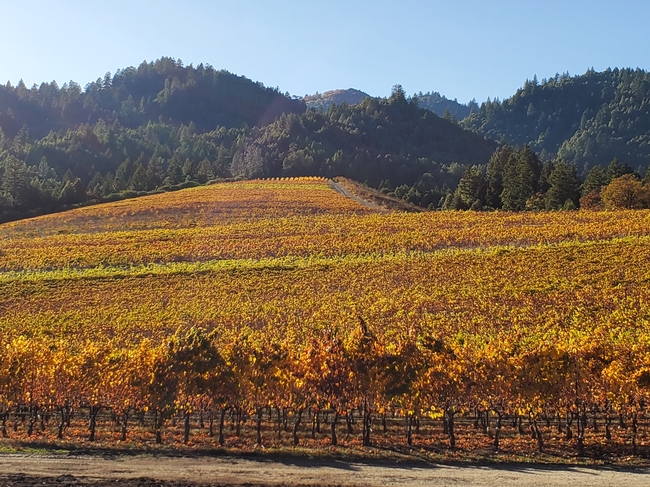
To learn more about Stuart and Alder Springs Vineyard, you can find their website online at https://www.alderspringsvineyard.com/ and follow them on Instagram @alderspringsvineyard.
To learn more about the work of the North Coast Soil Health Hub, particularly their soil health assessments for Northcoast vineyards, their website is http://soilhub.org/.
Climate smart agriculture encompasses management practices that increase soil carbon sequestration, reduce greenhouse gas emissions, improve yields and efficiencies, and promotes climate resilience. The California Department of Food and Agriculture (CDFA) supports three funding opportunities in climate smart agriculture: the Healthy Soils Program, the State Water Efficiency & Enhancement Program, and the Alternative Manure Management Program.
In a collaborative partnership, CDFA and UC Agriculture and Natural Resources have teamed up to support 10 Community Education Specialists throughout the state to provide technical assistance and outreach for the climate smart agriculture programs. To learn more and locate a specialist near you, visit http://ciwr.ucanr.edu/Programs/ClimateSmartAg/.
- Author: Alli Rowe
- Author: Niki Mazaroli
There has been much buzz and renewed interest recently in planting trees as a tool to combat both the causes and impacts of climate change. But what role do trees play in climate-smart agriculture?
With respect to building healthy soils, tree canopy and leaf litter can provide protection against wind erosion and temperature extremes. Tree roots can help stabilize soils, increase nutrient cycling, and improve soil biota representative of a healthy soil system. The incorporation of trees and shrubs on agricultural landscapes, known as agroforestry, blends the practices of forestry and agriculture and can provide many ecological and economic benefits.
The USDA defines agroforestry as “the intentional combination of agriculture and forestry to create productive and sustainable land use practices” [1]. In theory, it really is this simple: adding trees or shrubs to an agricultural landscape. In practice, like most things in agriculture, it is more nuanced and, of course, site specific. Agroforestry includes a suite of practices with varying degrees of complexity that yield systems also of varying degrees of complexity. The most common agroforestry practices in the U.S. are: alley cropping, silvopasture, riparian buffers, windbreaks, and multi-story cropping (also referred to as forest farming).
Like many of the practices that fall under the header of climate-smart agriculture, agroforestry is both old and new. While the term agroforestry is relatively new, agroforestry has been practiced for millennia, yielding diverse, multistoried food forests in both temperate and tropical climates. The recent interest in agroforestry of the last few decades has been driven in part by the desire to apply the benefits of perennial agriculture to address some of the challenges of row crop and animal agricultural systems.
When considering transitioning to agroforestry practices, it is crucial to understand in advance how the incorporation of perennial woody plants will impact your existing operation. Select trees and shrubs that will grow well in your climate and the specific conditions of your farm, and will complement - not compete with! - existing crops or pasture.

In addition to plant selection, site design and management are also key. For example, where you plant trees or shrubs on your farm in relation to other crops or other elements of your farm can determine whether there is synergy or competition for water and nutrients. Site design can also determine the need for different types of management, such as in alley cropping systems where the widths of the “alleys” between rows of trees must factor in the size of any machinery used.
A local example of agroforestry in action is at King & King Ranchin Fillmore. The King family received a Healthy Soils Program Incentive Grantaward to establish a windbreak along a 32-acre plot that is transitioning out of vegetable cultivation. The windbreak will protect the soil from the intense Santa Ana winds that sweep through the valley, establish living roots, sequester carbon in the woody biomass of the trees, and provide habitat for local pollinator and bird populations.
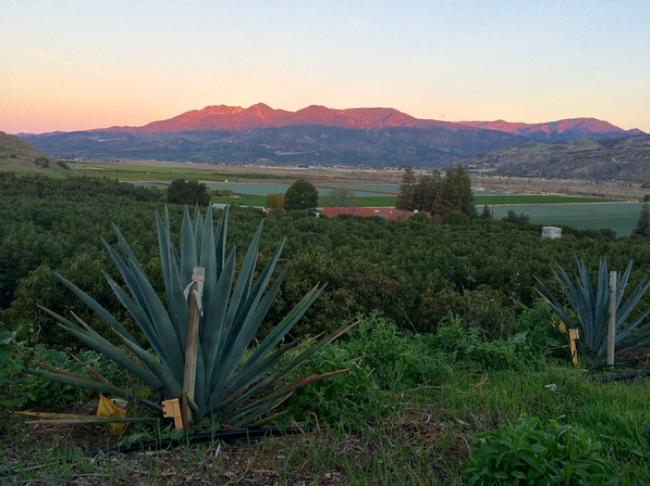
We will be highlighting more about agroforestry practices and the efforts of local producers in future blogposts, so stay tuned!
[1] USDA National Agroforestry Center. Agroforestry Practices. 2019. Available online: https://www.fs.usda.gov/nac/practices/index.shtml (accessed on 31 August 2018).
- Author: shulamit Shroder
When you think of armor, you might think of medieval knights protecting damsels in distress. For Frank Fernandes of Legacy Ranch, though, the damsel in distress is his soil. To protect his soil from compaction and weed pressure, he has experimented with strip tillage and cover crops in his forage crop fields. He calls these practices “soil armor.”
Reduced tillage
Soil armor means keeping the soil covered as much as possible. Instead of tilling the corn residues into the soil, Frank uses a no-till drill to seed the next crop. This leaves the previous crop's stubble on the field, protecting the soil from erosion. The corn residue acts like a mulch and keeps the soil surface cool, reducing evaporation even on hot days.
In the photo below, you can see the stalks of corn that remain, even after he planted a new crop in the field. This residue will slowly break down and feed the microbes in the soil. It will eventually provide nutrients to later crops. 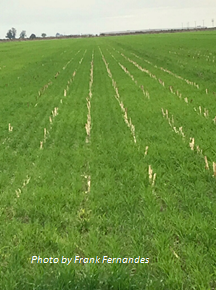
Cover crops
Frank also plants a diverse mix of cover crops between his corn and wheat rotation. This has reduced his weed pressure and enabled him to save money on herbicide applications and tractor passes.
One of the species he likes to plant is called a “tillage radish.” As you can see in the picture below, this plant develops a long, thick taproot that breaks up compaction. It decomposes quickly, leaving channels through which water can flow and roots can grow.
Benefits
Frank has experimented with these practices for a few years and has already noticed major improvements in these fields. His irrigation water percolates into the soil more quickly than it did in the past. He has increased the interval between irrigations, because the soil is able to hold onto more water. He has reduced the number of tractor passes. His fertilizer and herbicide needs have decreased. All these benefits have saved him tens of thousands of dollars.
What about yield? As might be expected for a new system, he has seen some drop in yields. However, this reduction has not been substantial and some fields have even reported increased yields. For Frank, the reduction in costs more than outweighs the slight reduction in yields. Yields should improve as the soil becomes healthier. 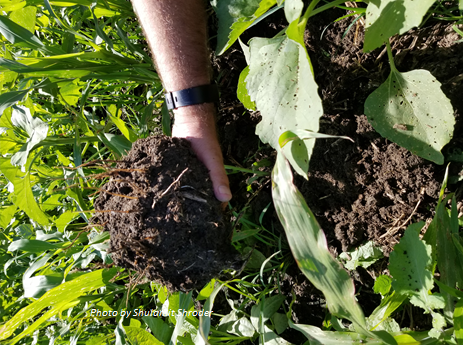
Climate smart agriculture encompasses management practices that increase soil carbon sequestration, reduce greenhouse gas emissions, improve yields and efficiencies, and promotes climate resilience. The California Department of Food and Agriculture (CDFA) supports three funding opportunities in climate smart agriculture: the Healthy Soils Program, the State Water Efficiency & Enhancement Program, and the Alternative Manure Management Program.
In a collaborative partnership, CDFA and UC Agriculture and Natural Resources have teamed up to support 9 community education specialists throughout the state to provide technical assistance and outreach for the climate smart agriculture programs. To learn more and locate a specialist near you, visit http://ciwr.ucanr.edu/Programs/ClimateSmartAg/.
- Author: Britta Leigh Baskerville

Just North of Fort Bragg, down a country road, sits a small community with a big mission. “We strive to ameliorate the suffering and other negative impacts of climate disasters” it's stated on their website. Applying for a California Department of Food and Agriculture (CDFA) Climate-Smart Healthy Soils Program grant was a part of that mission.
The Meadow Farm Community Land Trust (MFCLT) is a 501(c)3 with a conservation easement obtained by the late founder and property owner, Joanna Becker, in 2013. This easement protects the land from non-farming development, and the organization's board have continued with that legacy since Becker's death in 2016. The property is a total of 28 acres, though only 3 acres are currently devoted to fruit and vegetable production. So far.
Their website, https://www.meadowfarm.org/, details the remarkable journey the residents of this land have taken to get this far, as well as their vision, mission, and aims. Building affordable housing for their resident farmers is an important goal of theirs.
“Farming doesn't make much money, and some of us don't need a lot, but we still need a place to call home.”says resident, Sojourna Lee.
On my recent visit to the farm, Lee described the frequency of farming volunteers falling in love with the place and staying on to build small housing for themselves with the potential of obtaining a 99 year lease. They're permitted to build 4 more community houses on the land, something that will allow for greater expansion of the farming projects with enough hands to achieve this.
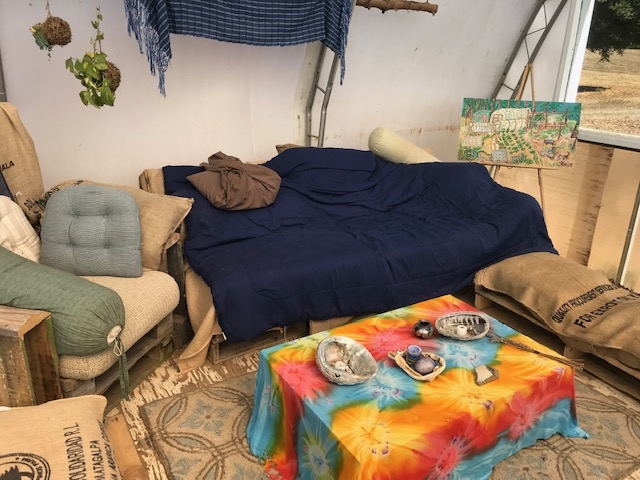
As a Community Education Specialist (CES) for the University of CA Cooperative Extension, I first reached out to MFCLT to congratulate them on being selected in the latest round of Healthy Soils Program awards. They were one of the 9 Mendocino County farmers selected, demonstrating a dedication to improving the soil quality on farms in the North Coast! Their award is for $17,765.11 going toward compost, mulch, and cover crop seed application and establishing a perennial hedgerow on a beautiful 6 acre meadow, which includes their 3 acre vegetable plot. In addition, MFCLT is contributing over $5500 in matching in-kind funds to complete this project.
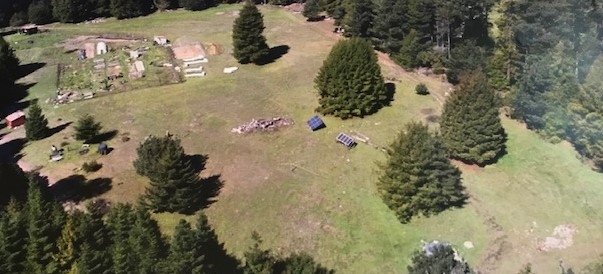
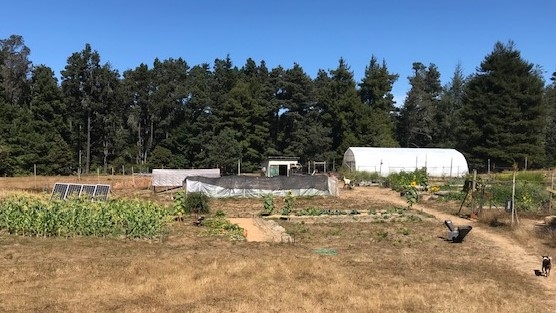
To apply, MFCLT's board member and resident, Ohi Vidaver, worked with conservation organization Fish Friendly Farming to complete the application process. This organization was a valuable Technical Assistance Provider (TAP) for many of the farmers in the area who were interested in applying. As our TAP contracts with the CDFA were not conflicting, I was able to supplement assistance once the applications were submitted and the award winners selected. This proved beneficial in the case of MFCLT, who had many questions and concerns around implementing their project now that they've been given the go-ahead to start.
Last week, I was invited to a delicious vegan curry lunch, prepared by members of their small crew, and was able to chat more with Lee and Vidaver about what was needed to get their project off the ground. As what is considered a Severely Disadvantaged Community, defined by the State Department of Parks and Recreation, they are eligible for up to 25% of the grant award to be paid in advance (as opposed to the standard invoice reimbursement). This is necessary, as the small non-profit is not able to pay the full cost of the project up front, but it is also a lengthy process to receive approval. Due to some delays with the CDFA's Office of Environmental Farming and Innovation, award winners were forced to wait over a month and a half from the advertised start date (July 1st) to receive their contracts that would allow them to start. On top of this, the deadline to implement year 1 of the project's practices is December 31st, 2019, giving them only 4.5 months, which will surely be hampered once the rains make it impossible to work the fields. This is an example of why some farmers hesitate to take advantage of government grants, as it will take a lot of time, feedback, and alterations before this program becomes practical to anyone except large-scale farmers with the resources available to work quickly. Still, Meadow Farm is determined to improve the soil quality of their land, and they are going to try their best with limited time, labor, and machinery. We discussed the local resources available for tool and labor sharing to make the daunting task of spreading compost, mulch, and seed over 6 acres less intimidating. This need, plus a mission to provide “an opportunity for enriching lives through affordable accommodations, permaculture, organic farming, education and other creative endeavors”makes it a great spot for workaways and volunteers to be a part of the magic of soil remediation and carbon sequestration. Touring the 6 acre meadow and seeing the potential of the land and of the community, I can see why some people choose to stay on as permanent residents.
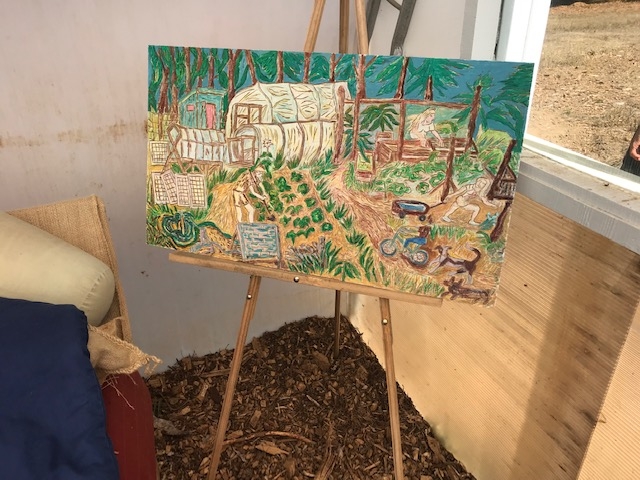
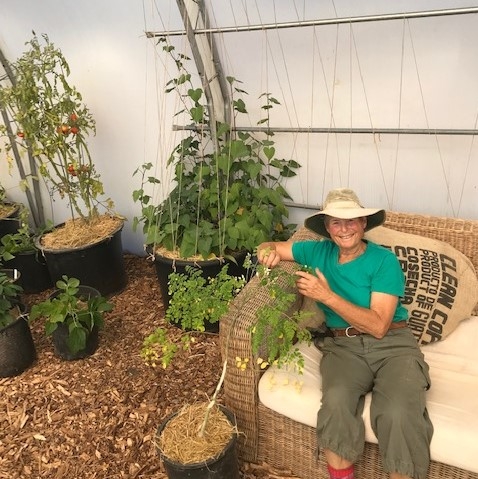
Stay tuned for more updates on the Healthy Soils projects as they unfold in the coming years! If you are near the Mendocino Coast, be sure to look up Meadow View Community Land Trust and take home some nutritious and diverse veggies exchanged on a donation-basis! There will likely be some organized volunteer work days in the coming months, which would be a great opportunity to get involved.
Climate smart agriculture encompasses management practices that increase soil carbon sequestration, reduce greenhouse gas emissions, improve yields and efficiencies, and promotes climate resilience. The California Department of Food and Agriculture (CDFA) supports three funding opportunities in climate smart agriculture: the Healthy Soils Program, the State Water Efficiency & Enhancement Program, and the Alternative Manure Management Program.
In a collaborative partnership, CDFA and UC Agriculture and Natural Resources have teamed up to support 9 community education specialists throughout the state to provide technical assistance and outreach for the climate smart agriculture programs. To learn more and locate a specialist near you, visit http://ciwr.ucanr.edu/Programs/ClimateSmartAg/.
- Author: Caddie Bergren
- Author: shulamit Shroder
Dairies produce lots of milk – and manure. The ingenious dairymen of the Central Valley often use one to produce the other. They grow forage crops like alfalfa and corn that they then feed to their cattle. To provide key nutrients to these crops and deal with the natural waste of a livestock operation, they can spread manure straight onto their fields or they can use effluent water to simultaneously irrigate and fertilize those fields.
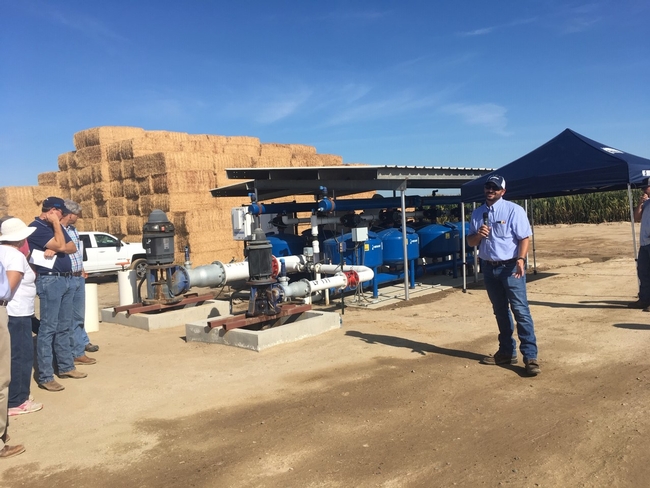
To apply that dairy effluent water, many farmers use flood irrigation systems. This is a cheaper, low-tech option, but it can require more ongoing labor and risks overwatering and nitrate leaching.
Subsurface drip irrigation is ideal for many forage crops and can significantly reduce water use, but dairy effluent water tends to clog up these systems.
A recent partnership between the USDA's Natural Resources Conservation Service, Netafim, Sustainable Conservation, and three dairy producers in the Central Valley teamed up to solve this problem. After three years of research and testing, they were able to share their success at two recent field days held on the dairies in Chowchilla and Buttonwillow.
To achieve success, the partners found they needed to customize the systems to each dairy's size and physical layout between lagoons and fields. To prevent clogging, they needed twice as many filters as they'd need for filtering canal or groundwater and they need to be flushed more frequently than other drip systems. But after three years of using and adjusting their system, the managers at DeJager Dairy in Chowchilla reported steady crop yields with significantly lower water use. The best part was the ability to monitor nutrient levels and schedule irrigation sets remotely from the comfort of their office.
At one pilot farm in the Buttonwillow area, the dairyman found that he reduced his water usage from 55 inches per corn crop under flood irrigation to 34 inches under subsurface drip. He also recorded a slight increase in yield. This enabled him to drastically increase the amount of crop he produced per drop of water he used. In addition to the increased water use efficiency, the farmer managed to save on labor costs by automating his irrigation system.
For an added bonus, UC Davis researchers measured a 90% decrease in the emission of nitrous oxide, a potent greenhouse gas.
With all the benefits of this new system comes one significant obstacle for dairymen: high upfront cost. But starting next year, NRCS will cost share up to 75% of the installation price for a limited number of years. Dairymen can also apply for the California Department of Food and Agriculture's Alternative Manure Management Program to help them better separate their solid and liquid wastes.
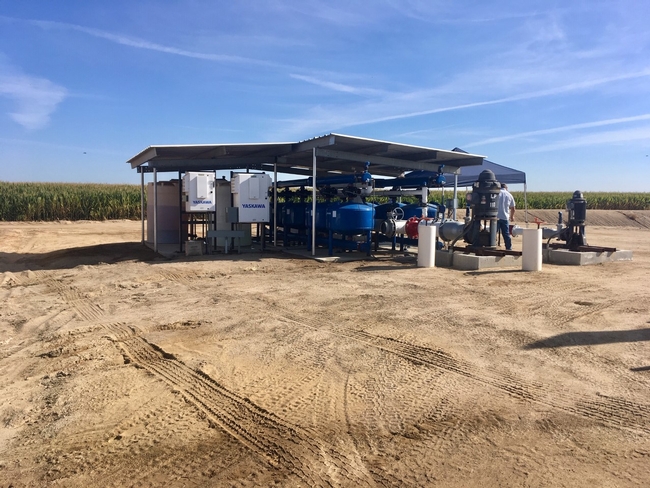
Climate smart agriculture encompasses management practices that increase soil carbon sequestration, reduce greenhouse gas emissions, improve yields and efficiencies, and promotes climate resilience. The California Department of Food and Agriculture (CDFA) supports three funding opportunities in climate smart agriculture: the Healthy Soils Program, the State Water Efficiency & Enhancement Program, and the Alternative Manure Management Program.
In a collaborative partnership, CDFA and UC Agriculture and Natural Resources have teamed up to support 10 community education specialists throughout the state to provide technical assistance and outreach for the climate smart agriculture programs.

